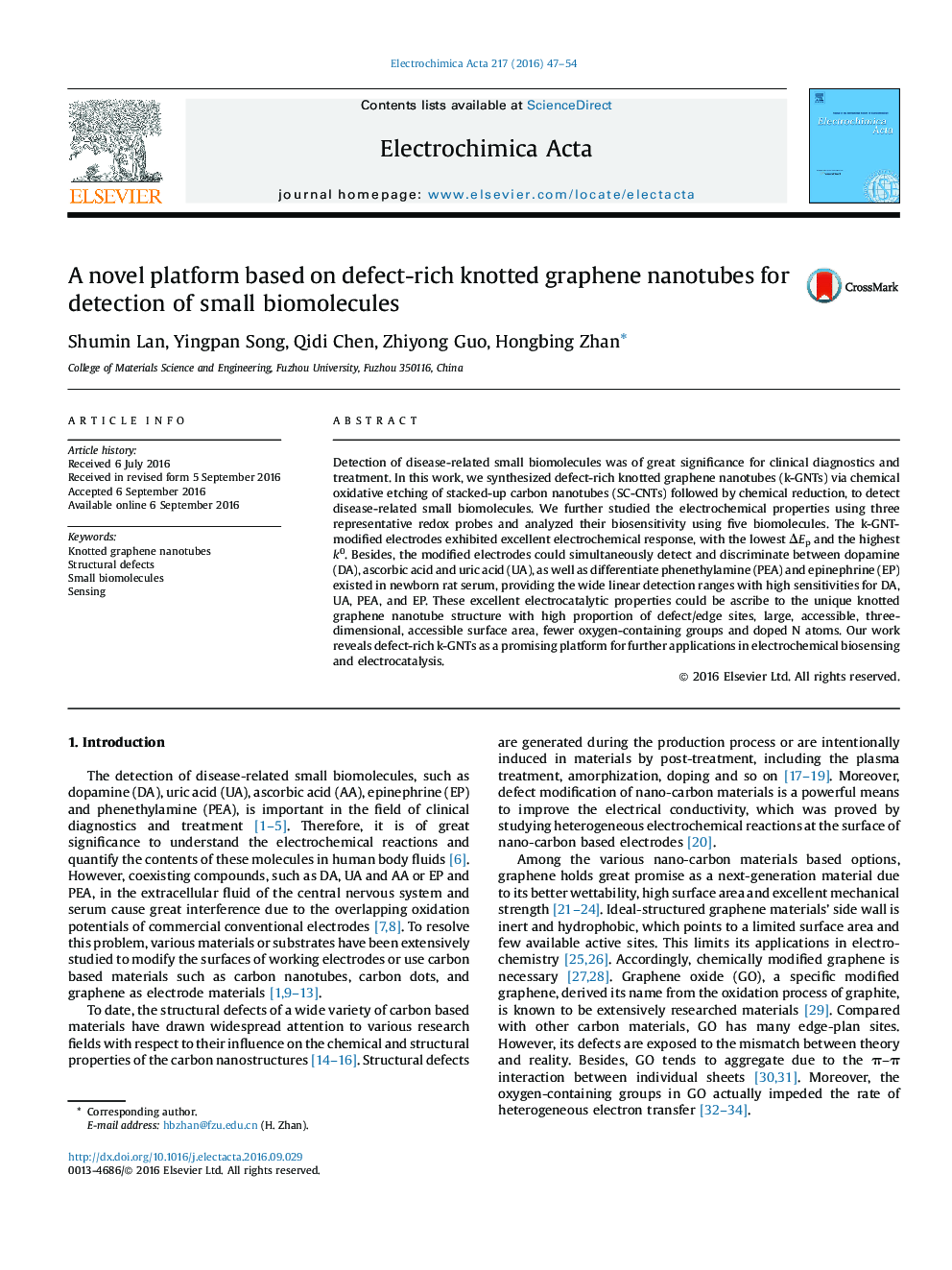| Article ID | Journal | Published Year | Pages | File Type |
|---|---|---|---|---|
| 6472785 | Electrochimica Acta | 2016 | 8 Pages |
â¢Curvature of the SC-CNTs' cavities had more local pressure, leading to form k-GNTs.â¢k-GNTs are divided into sections by knots with abundant edge-plane sites/defects.â¢k-GNTs exhibited excellent catalytic activity, sensitivity and reproducibility.
Detection of disease-related small biomolecules was of great significance for clinical diagnostics and treatment. In this work, we synthesized defect-rich knotted graphene nanotubes (k-GNTs) via chemical oxidative etching of stacked-up carbon nanotubes (SC-CNTs) followed by chemical reduction, to detect disease-related small biomolecules. We further studied the electrochemical properties using three representative redox probes and analyzed their biosensitivity using five biomolecules. The k-GNT-modified electrodes exhibited excellent electrochemical response, with the lowest ÎEp and the highest k0. Besides, the modified electrodes could simultaneously detect and discriminate between dopamine (DA), ascorbic acid and uric acid (UA), as well as differentiate phenethylamine (PEA) and epinephrine (EP) existed in newborn rat serum, providing the wide linear detection ranges with high sensitivities for DA, UA, PEA, and EP. These excellent electrocatalytic properties could be ascribe to the unique knotted graphene nanotube structure with high proportion of defect/edge sites, large, accessible, three-dimensional, accessible surface area, fewer oxygen-containing groups and doped N atoms. Our work reveals defect-rich k-GNTs as a promising platform for further applications in electrochemical biosensing and electrocatalysis.
Graphical abstractDownload high-res image (191KB)Download full-size image
